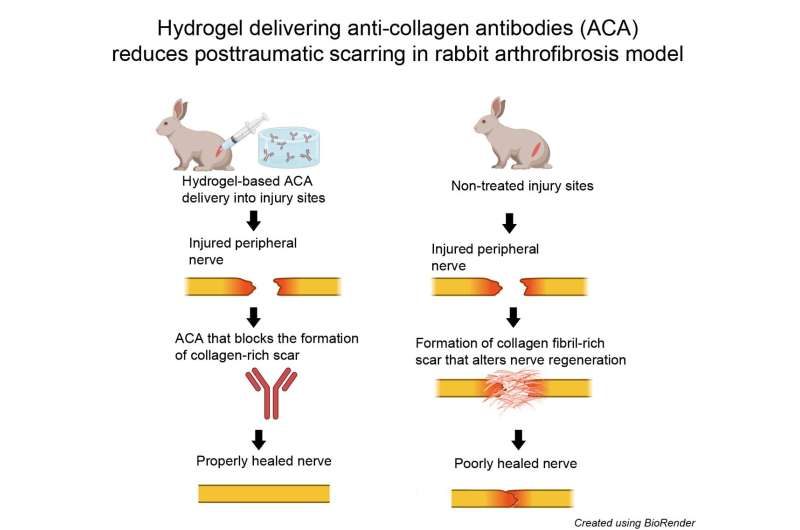This article has been reviewed according to Science X's editorial process and policies. Editors have highlighted the following attributes while ensuring the content's credibility:
fact-checked
trusted source
proofread
Breaking down the 'brick wall' of scar tissue

Doctors in the U.S. perform nearly 800,000 total knee replacements every year, but some estimates indicate that up to 10% of patients may emerge from surgery with a new problem: arthrofibrosis or excessive scarring that limits mobility.
"Scar formation is a natural process of wound healing," says connective tissue researcher Andrej Fertala, Ph.D.. "However, when too much scar tissue is formed around a joint, it can stop us from moving as we'd like to."
Few treatments currently exist for arthrofibrosis, but Dr. Fertala is working to change that. The most recent step in his research, published in the journal Gels, provides preliminary support for a technique that locally delivers antibody therapy to the knee.
After injury, cells release collagen molecules. Just as bricks are stacked and mortared to form a stable wall, these collagen molecules naturally aggregate into a sturdy scaffold to patch damaged tissue, Dr. Fertala explains. However, when excessive scar tissue forms after surgery or traumatic injury, the scaffold of collagen molecules becomes an impenetrable wall that prevents movement.
To stop that "wall" from being built, his technique employs an anti-collagen antibody—a specialized protein that latches onto collagen, disrupting the geometry that helps it stack. The antibody is delivered using a gel that shrinks at body temperature, keeping it concentrated and allowing its slow release at the knee joint.
This technique aided recovery in an animal model of injury, helping a damaged nerve near the knee joint grow back rather than being impinged by scar tissue. Without the antibody treatment, the nerve remained encased by scar tissue, preventing normal movement. Dr. Fertala says more tests need to be conducted to translate the therapy to humans, but the initial results are highly promising.
"Currently, apart from costly and painful surgical interventions and aggressive physical therapies, patients lack viable options to mitigate excessive scar formation," says research associate and study co-author Andrzej Steplewski, Ph.D., "If successful, our method can potentially advance treating these debilitating conditions."
More information: Andrzej Steplewski et al, Evaluating the Efficacy of a Thermoresponsive Hydrogel for Delivering Anti-Collagen Antibodies to Reduce Posttraumatic Scarring in Orthopedic Tissues, Gels (2023). DOI: 10.3390/gels9120971



















